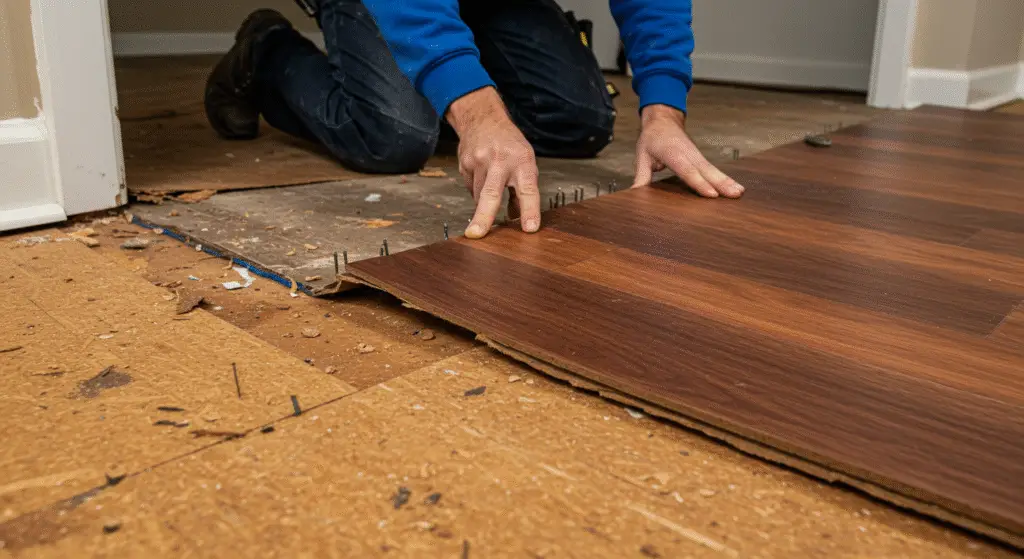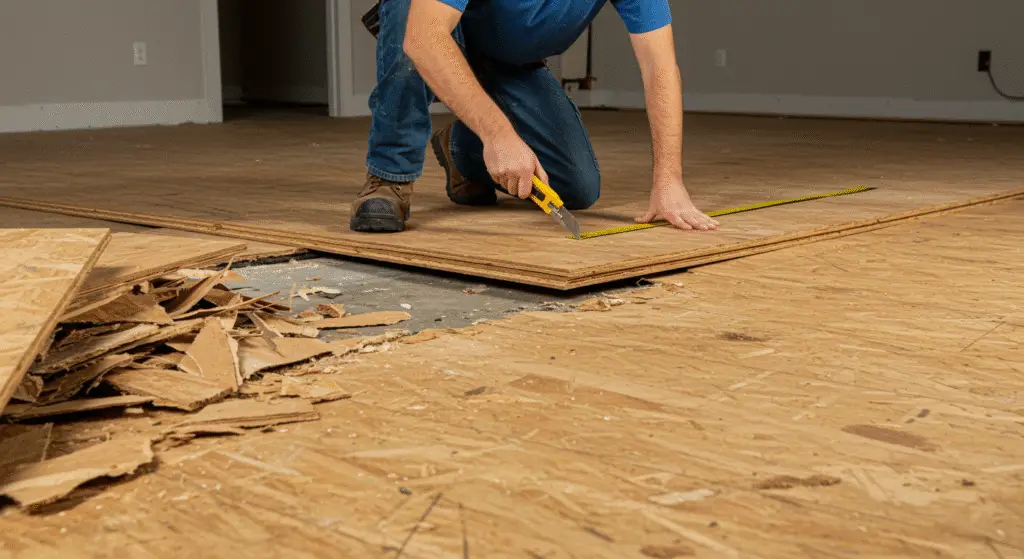
Replacing subfloor might not be something most homeowners think about every day, but it becomes important when your floors start making noise, feel soft underfoot, or show signs of damage. A solid subfloor is the hidden strength that keeps your floors stable and long-lasting.
If you’re dealing with water damage, mold, or just old worn-out flooring, it’s probably time to think about replacing the subfloor. This guide will help you understand what to look for, how to go about it, and how to make sure it lasts for years to come.
What Is a Subfloor and Why It Matters
A subfloor is the layer that sits between your floor covering (like tile, carpet, or hardwood) and the structure of your home. It supports everything above it. If this layer becomes weak or damaged, it can lead to uneven floors, squeaks, or even more serious structural problems.
That’s why replacing subfloor when needed is so important. If you catch the problem early and handle it properly, you can avoid much bigger issues later on.
Signs That Your Subfloor Needs Replacing
There are a few clear signs that it might be time to replace your subfloor. If your floor squeaks a lot, feels spongy or soft in places, or seems uneven, there could be a problem underneath. Musty smells might mean there’s hidden mold. Cracked tiles or floors that shift when you walk over them can also point to subfloor issues.
If you notice any of these signs, take a closer look or call in a professional to inspect the area. Catching the issue early makes the job easier and less expensive.
Picking the Right Materials
When it comes to replacing subfloor, choosing the right materials is key. Plywood is a strong and common choice. It’s sturdy and works well in most rooms. Another option is oriented strand board (OSB), which is more affordable but not quite as strong. In areas like bathrooms or laundry rooms where water is a concern, cement board or treated plywood is better because it can handle moisture.
Your choice of material should depend on where you’re working and how much moisture is expected in that area.
What You’ll Need to Do the Job
You don’t need to be a contractor to replace a subfloor, but having the right tools helps a lot. Some basic tools you’ll need include a pry bar, circular saw, drill, tape measure, and safety gear. You may also need a jigsaw or a saw to cut out old pieces cleanly.
Using good tools makes the job smoother and safer. If you don’t have them, consider borrowing or renting them.

How the Process Works
Start by removing the floor covering. This could be carpet, tile, or hardwood. Once that’s out of the way, inspect the subfloor. Look for signs of rot, water damage, or mold.
Cut away the damaged parts carefully. Make sure the joists underneath are in good shape. Once the old subfloor is gone, clean the area, measure, and cut your new subfloor panels to fit. Lay them down securely, using construction adhesive and screws to keep everything tight and quiet.
Seal the edges, especially in areas where water might be a problem, to help prevent future damage.
Costs to Keep in Mind
The cost of replacing a subfloor depends on how big the area is and whether you do it yourself or hire someone. If you do it on your own, you might spend a few hundred dollars on materials. If you hire a contractor, the cost will be higher because of labor.
Keep in mind that extra problems like mold removal or fixing damaged joists will add to the price. It’s a good idea to plan for some extra costs just in case.
Dealing with Moisture
Rooms like bathrooms, kitchens, and basements often have more moisture. When replacing subfloor in these spaces, use materials that resist water. It’s also a smart move to install a moisture barrier before laying down your top flooring.
This extra step can help protect your subfloor for years to come and reduce the chance of needing to do it all over again.
Tips to Avoid Future Problems
Once your new subfloor is in place, you’ll want to keep it in good shape. Watch for plumbing leaks and fix them quickly. Use a dehumidifier in damp rooms to keep moisture down. Make sure there’s good airflow, especially in places like basements or bathrooms.
Regular inspections and quick repairs can help your new subfloor last longer and save you money in the long run.
Final Thoughts
Replacing subfloor might sound like a big job, but with the right approach, it’s totally doable. Whether you handle it yourself or hire a professional, knowing what to look for and what to do can help you get it done right.
A strong subfloor supports your entire flooring system, so taking care of it is worth the time and effort. If your floors are showing signs of damage, don’t wait. Replacing subfloor now can save you from bigger problems later.
